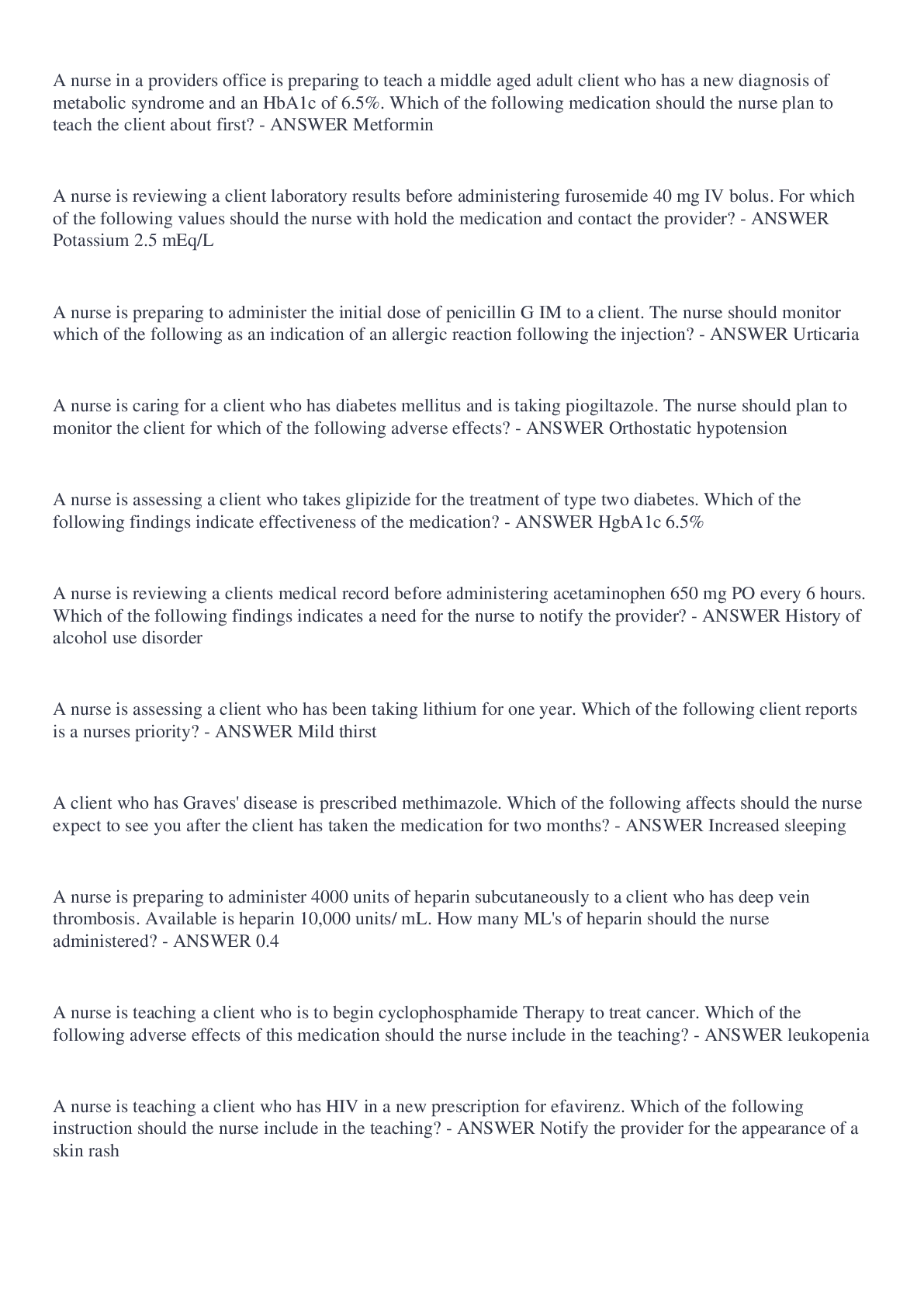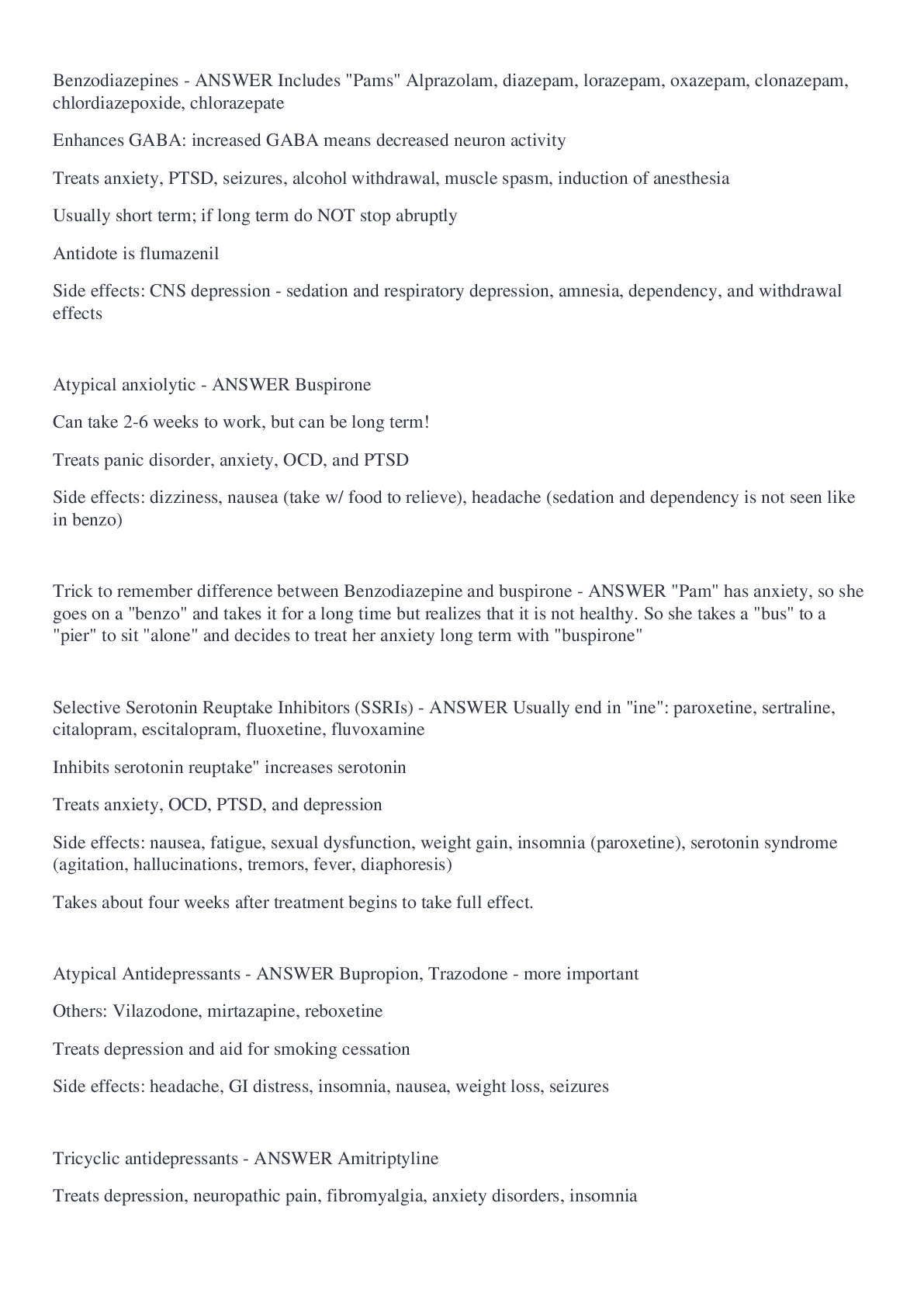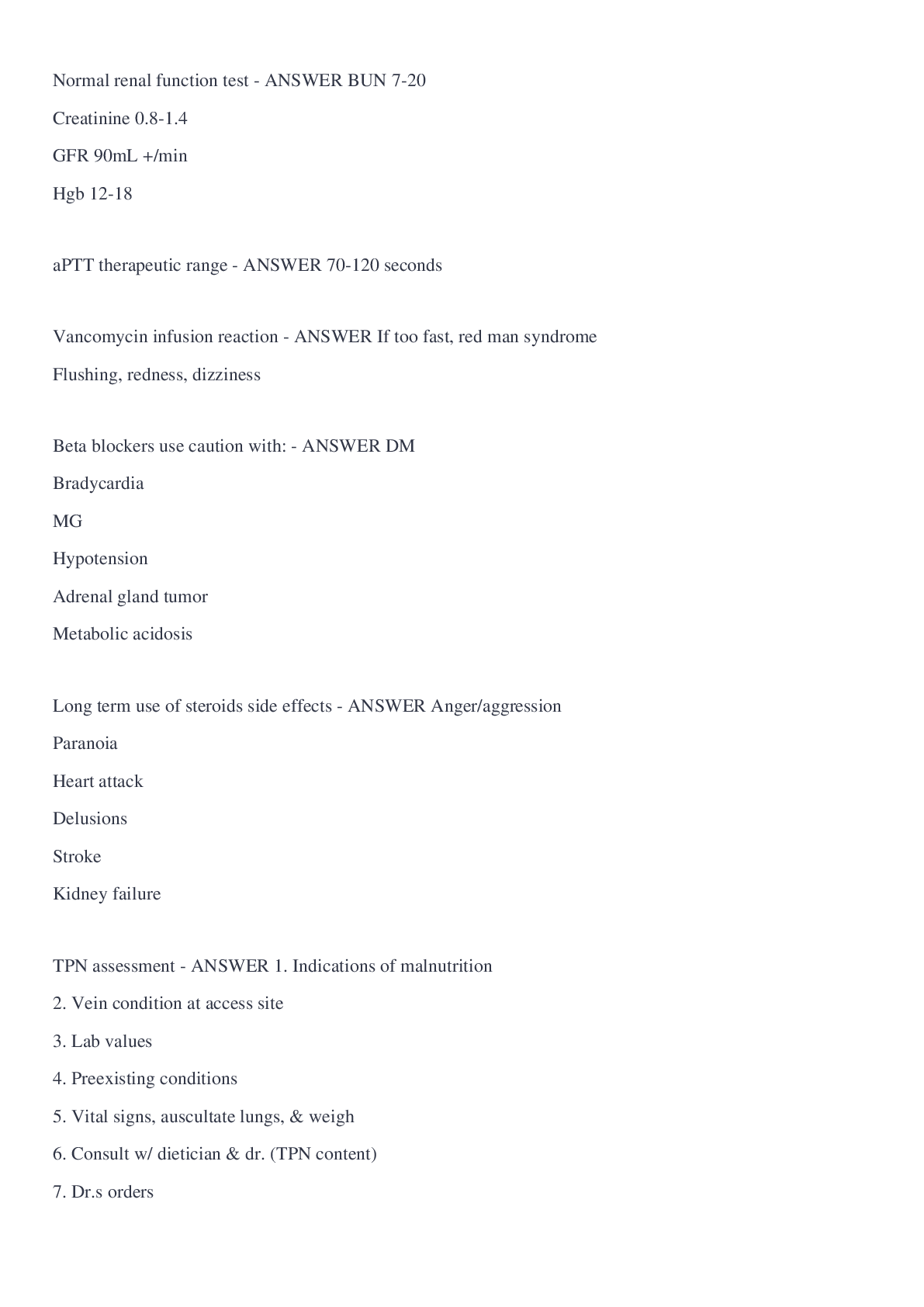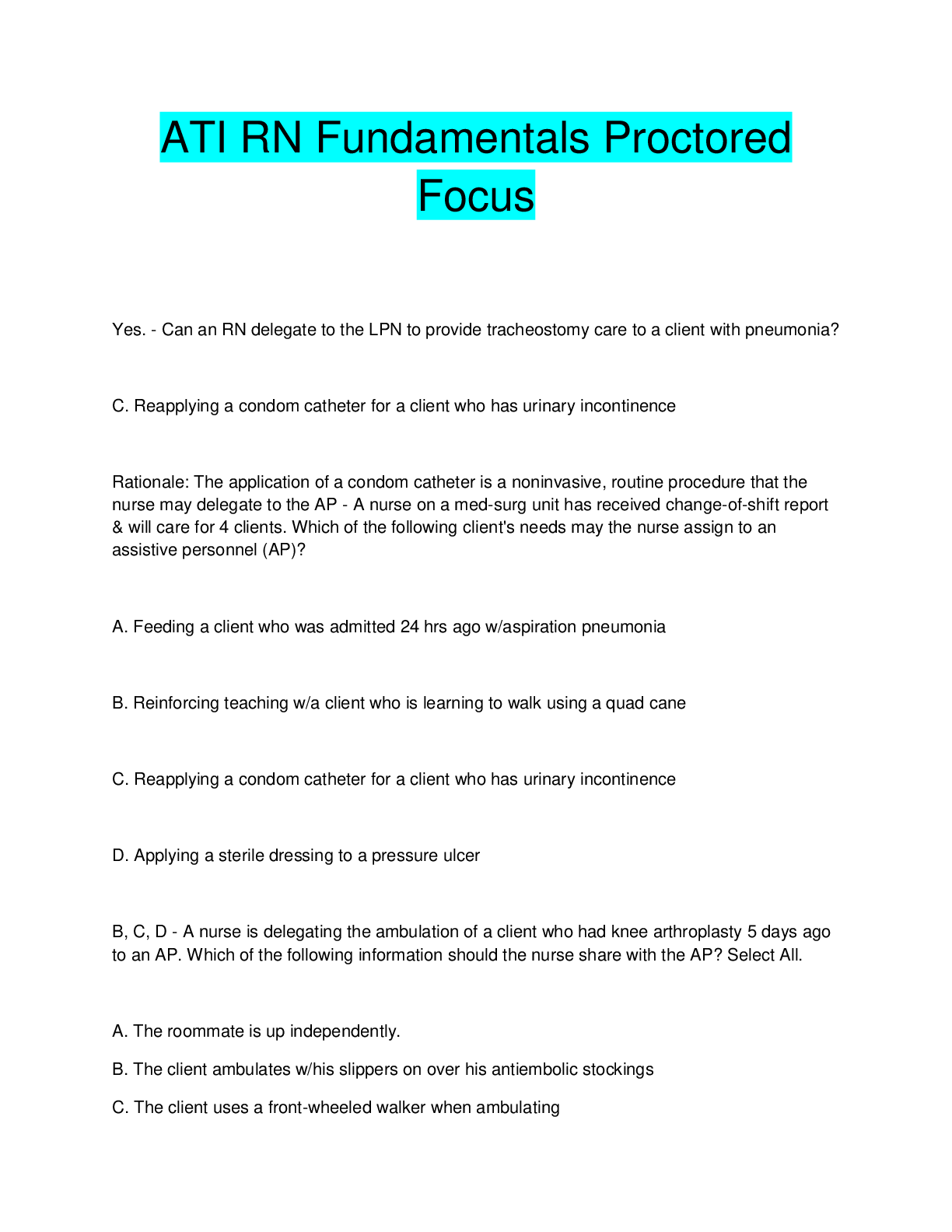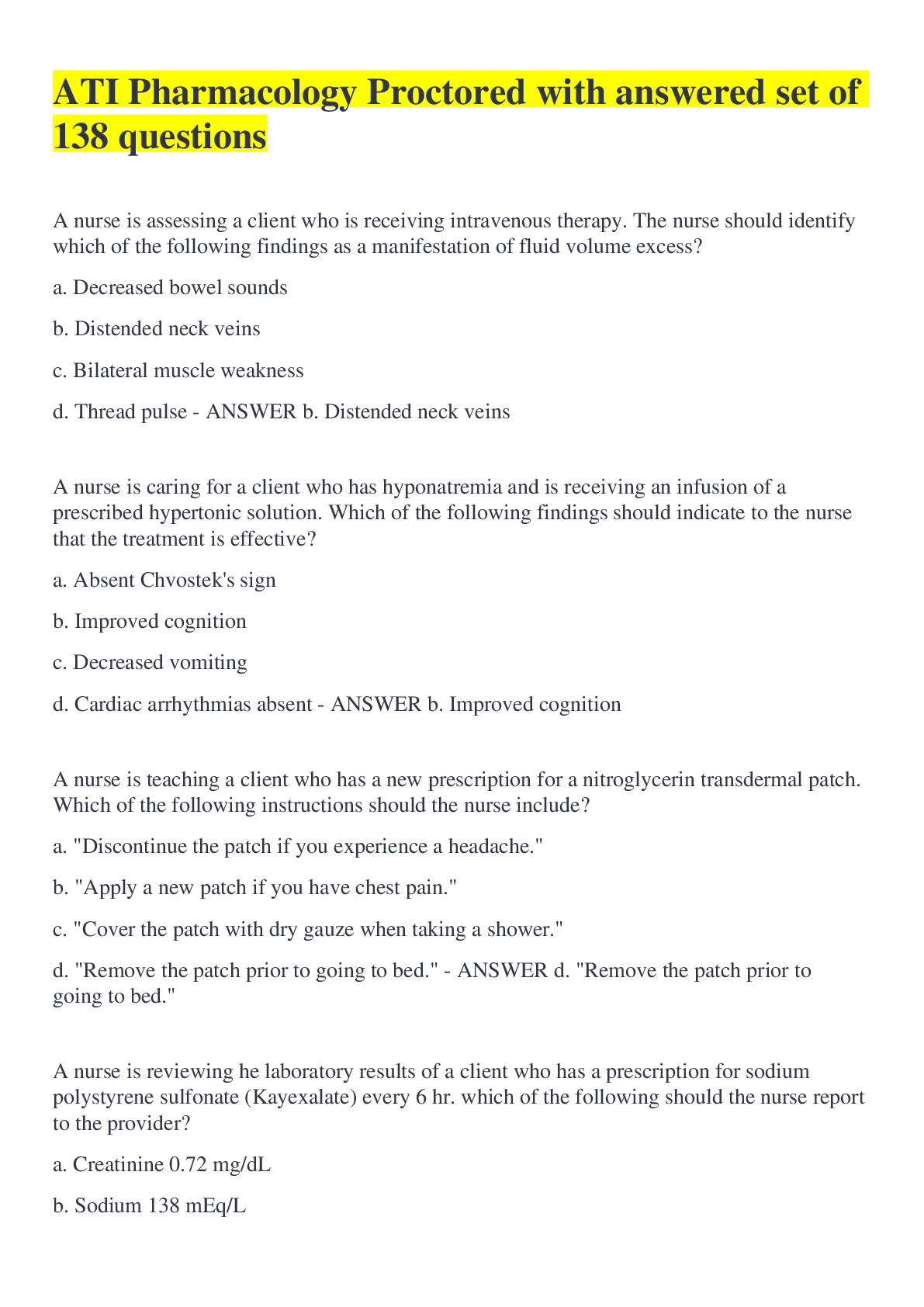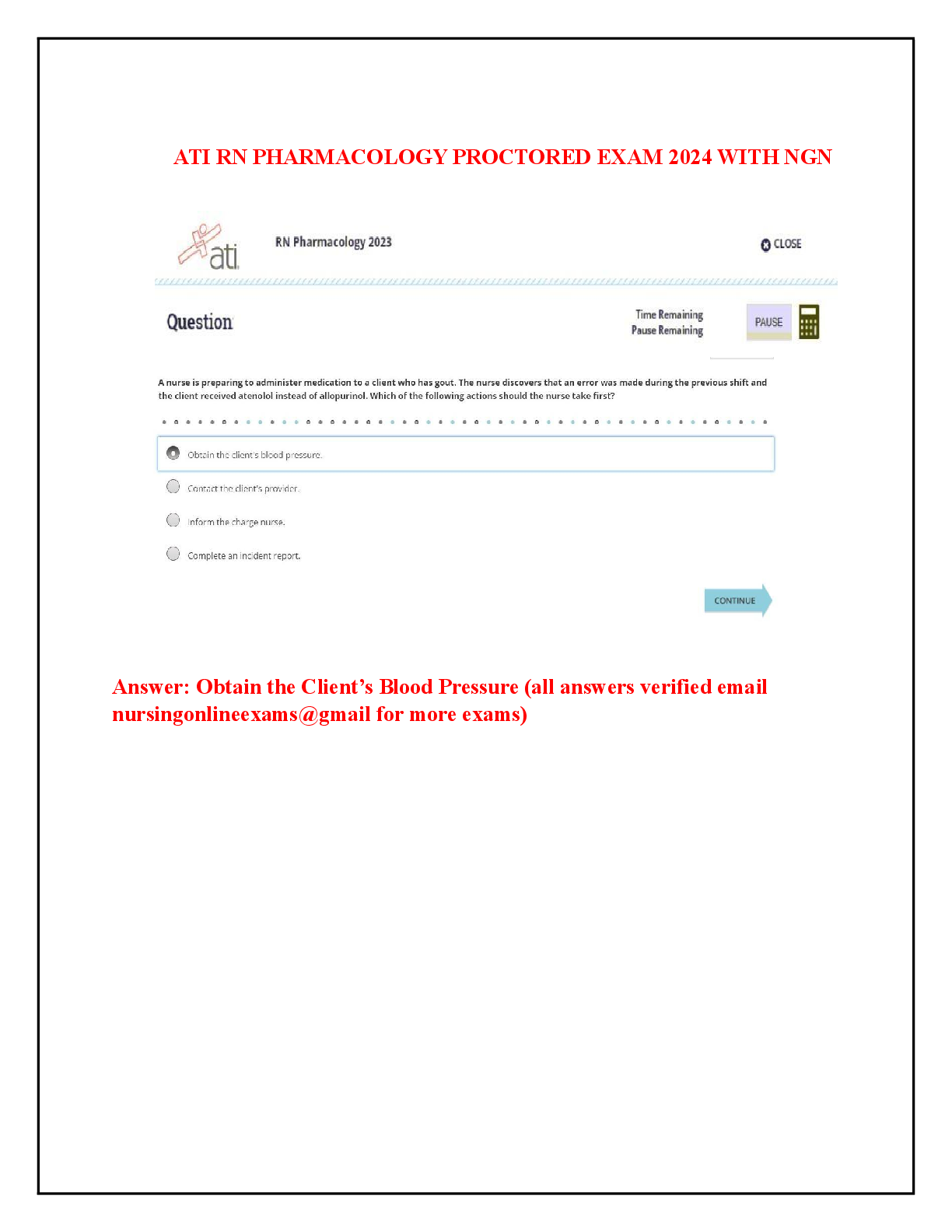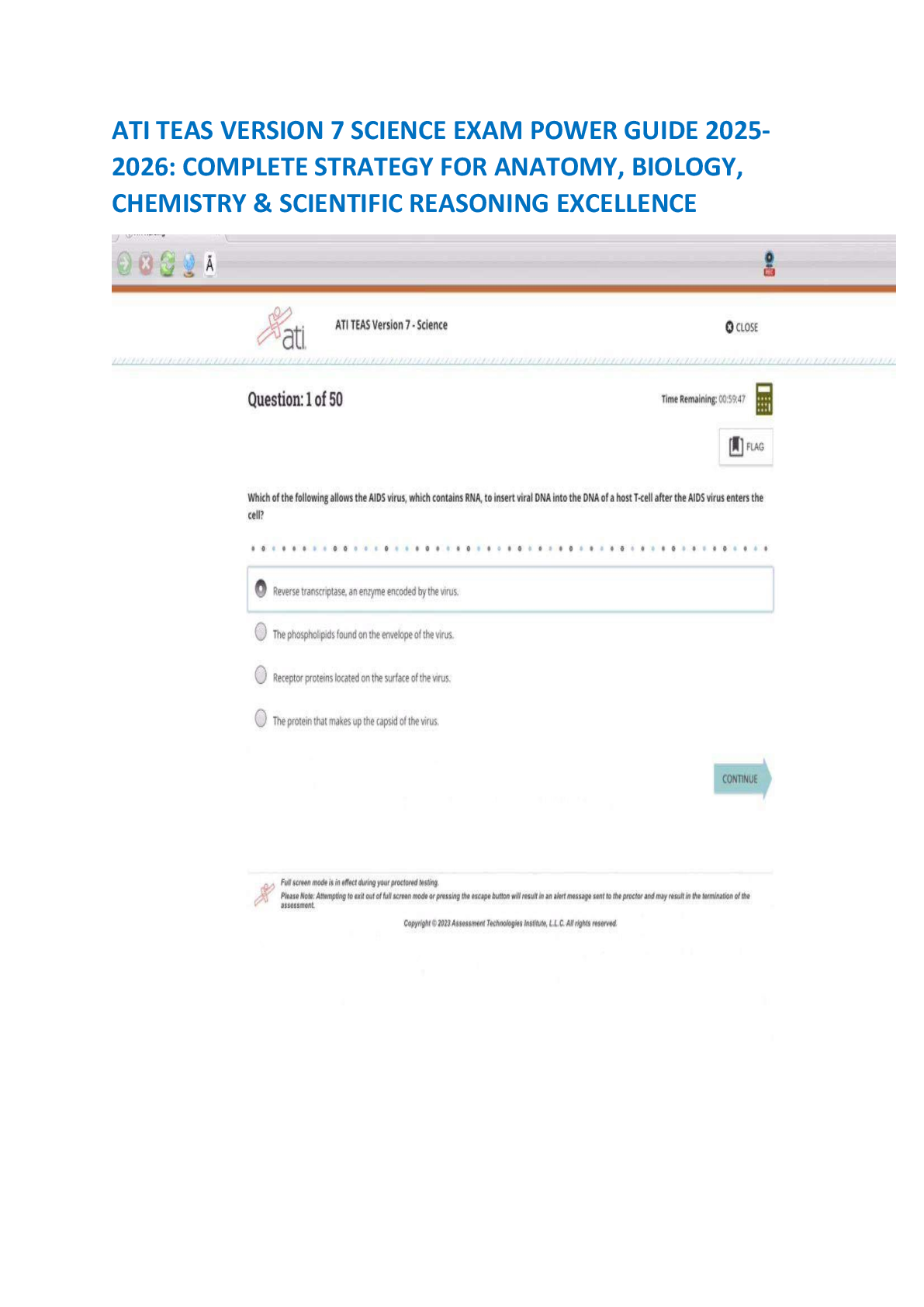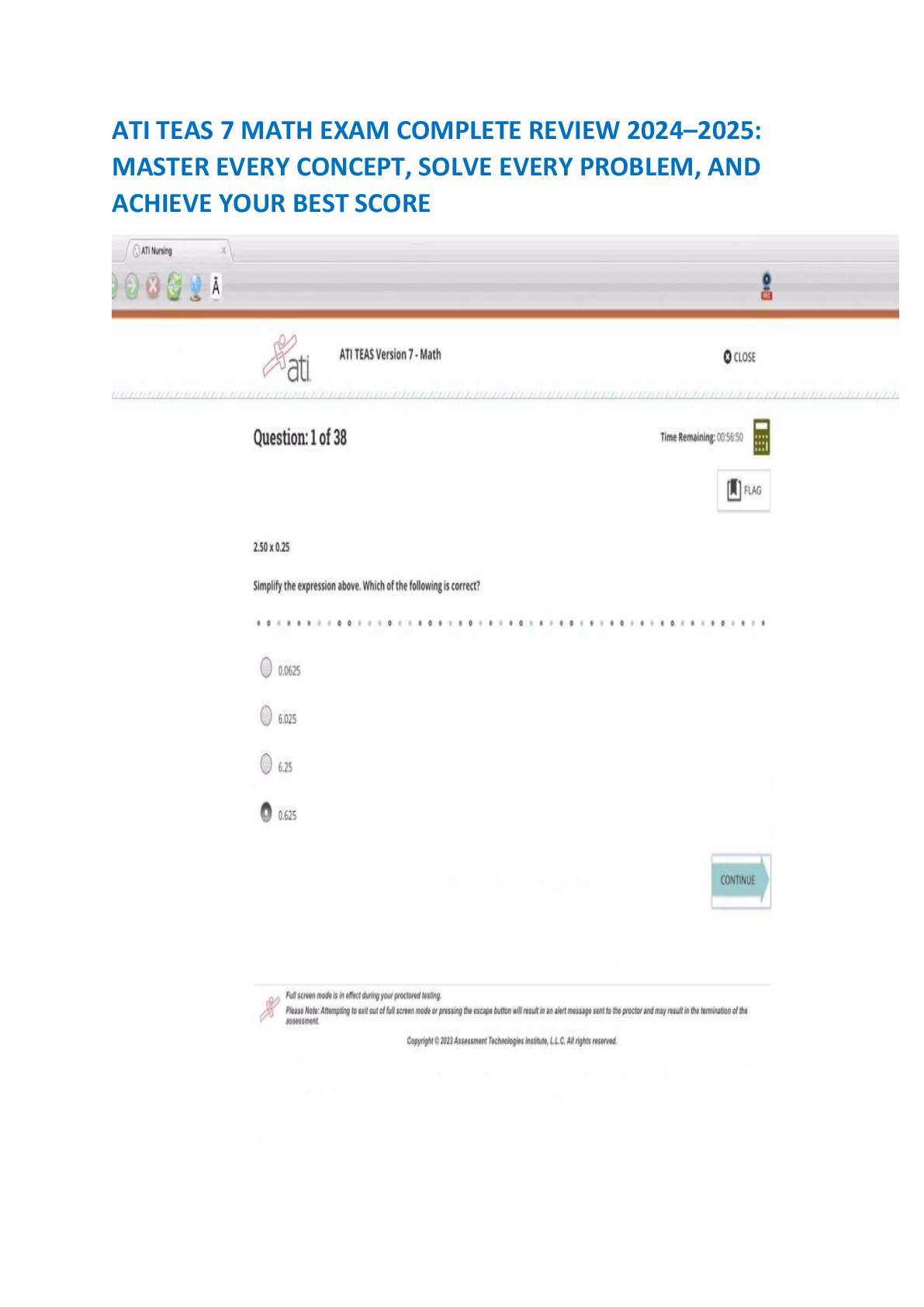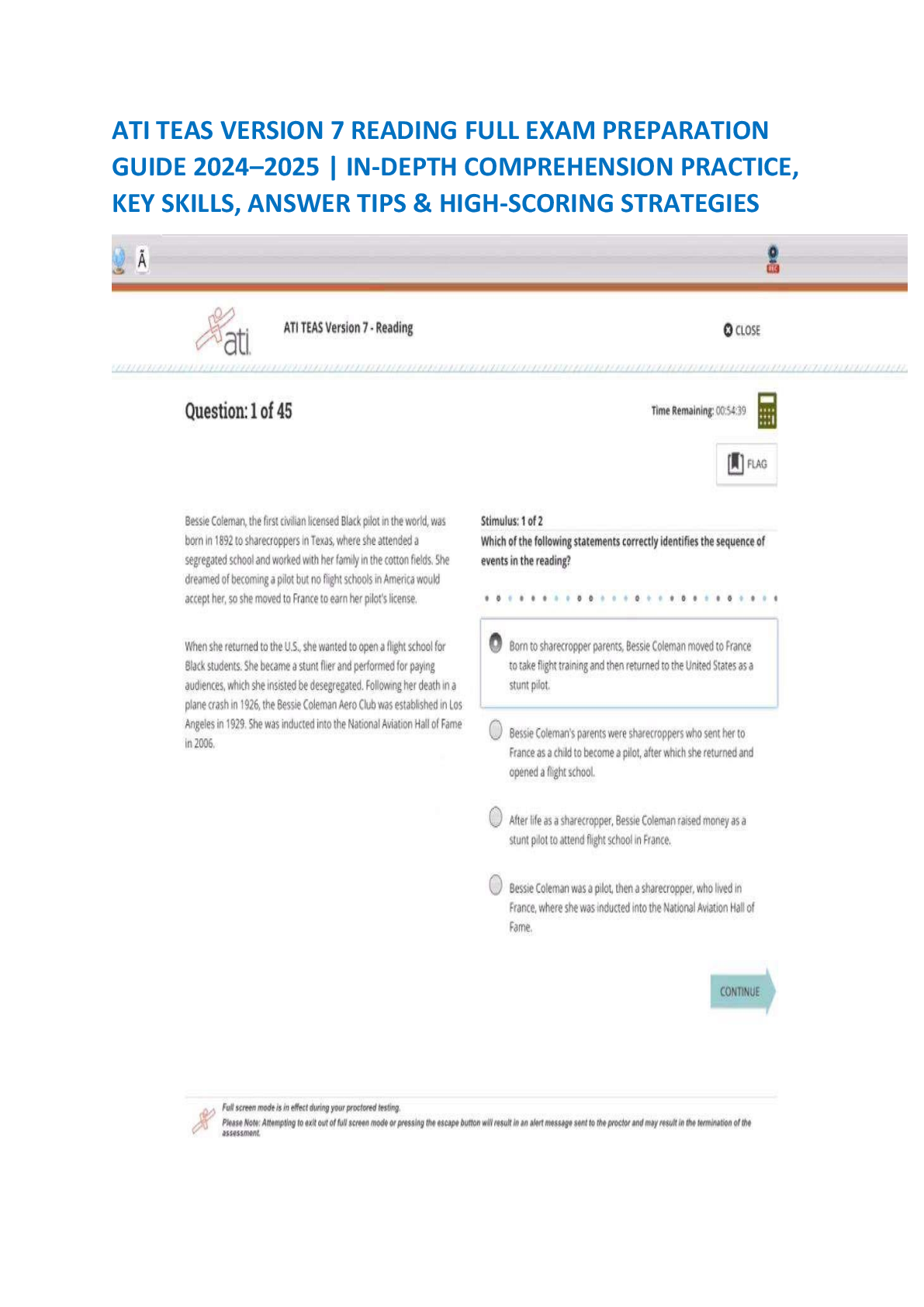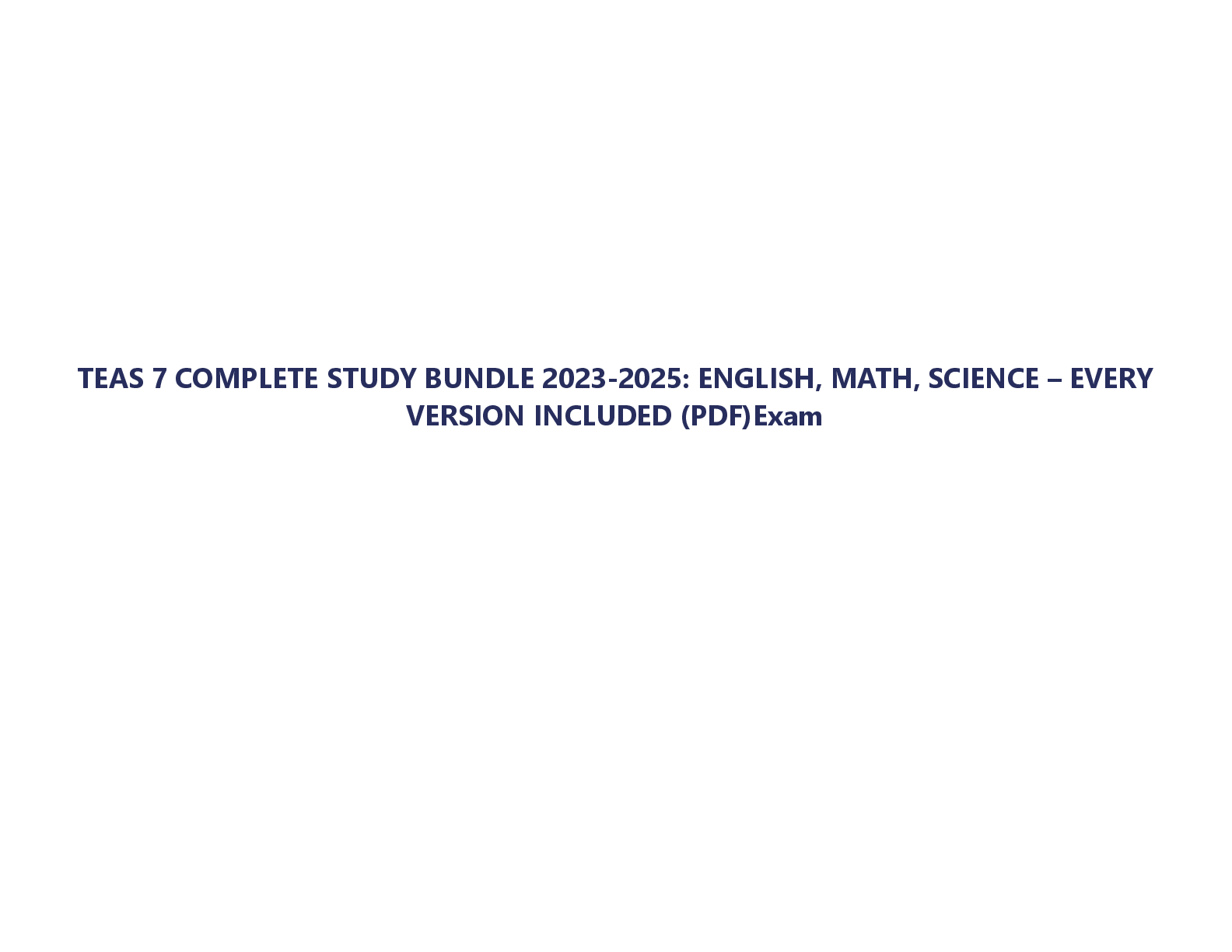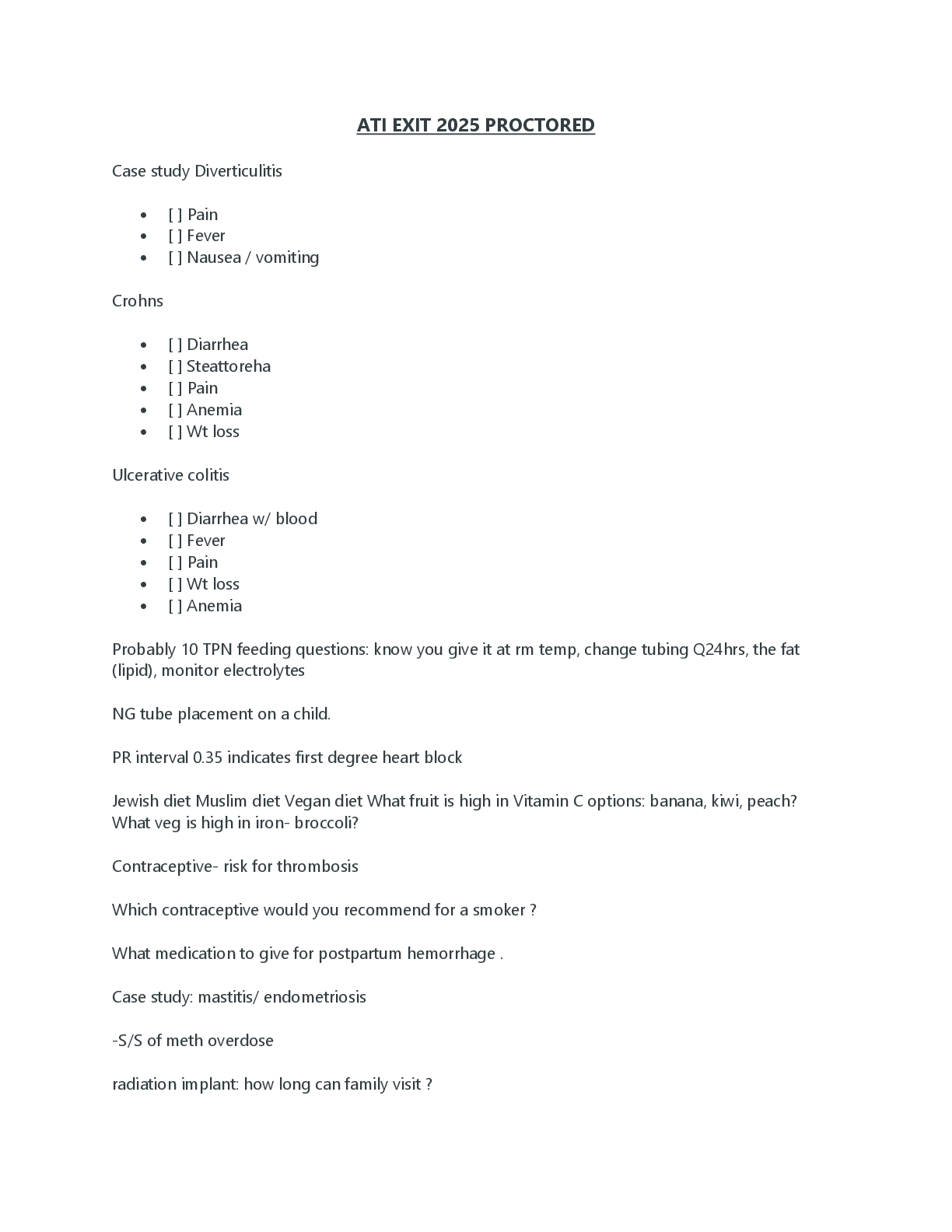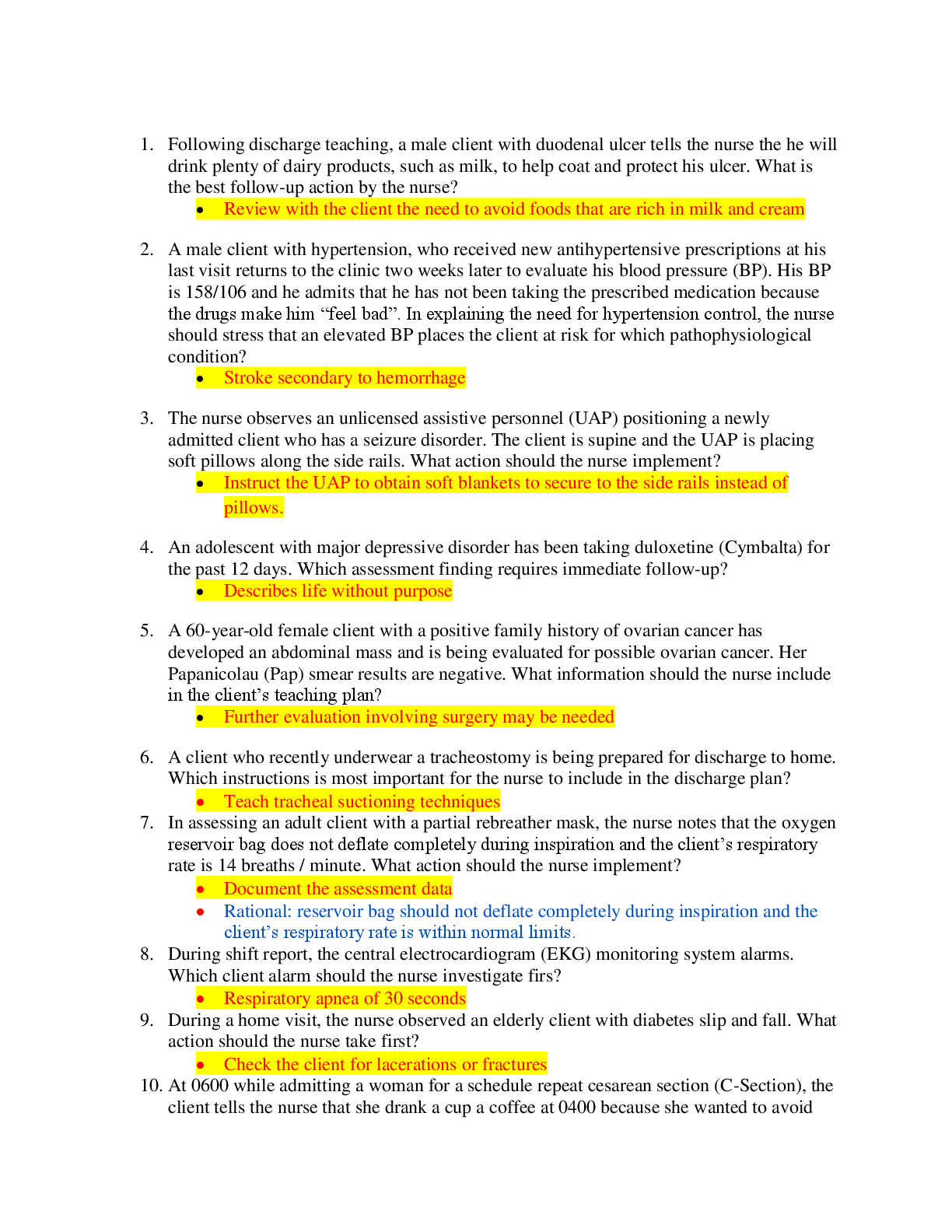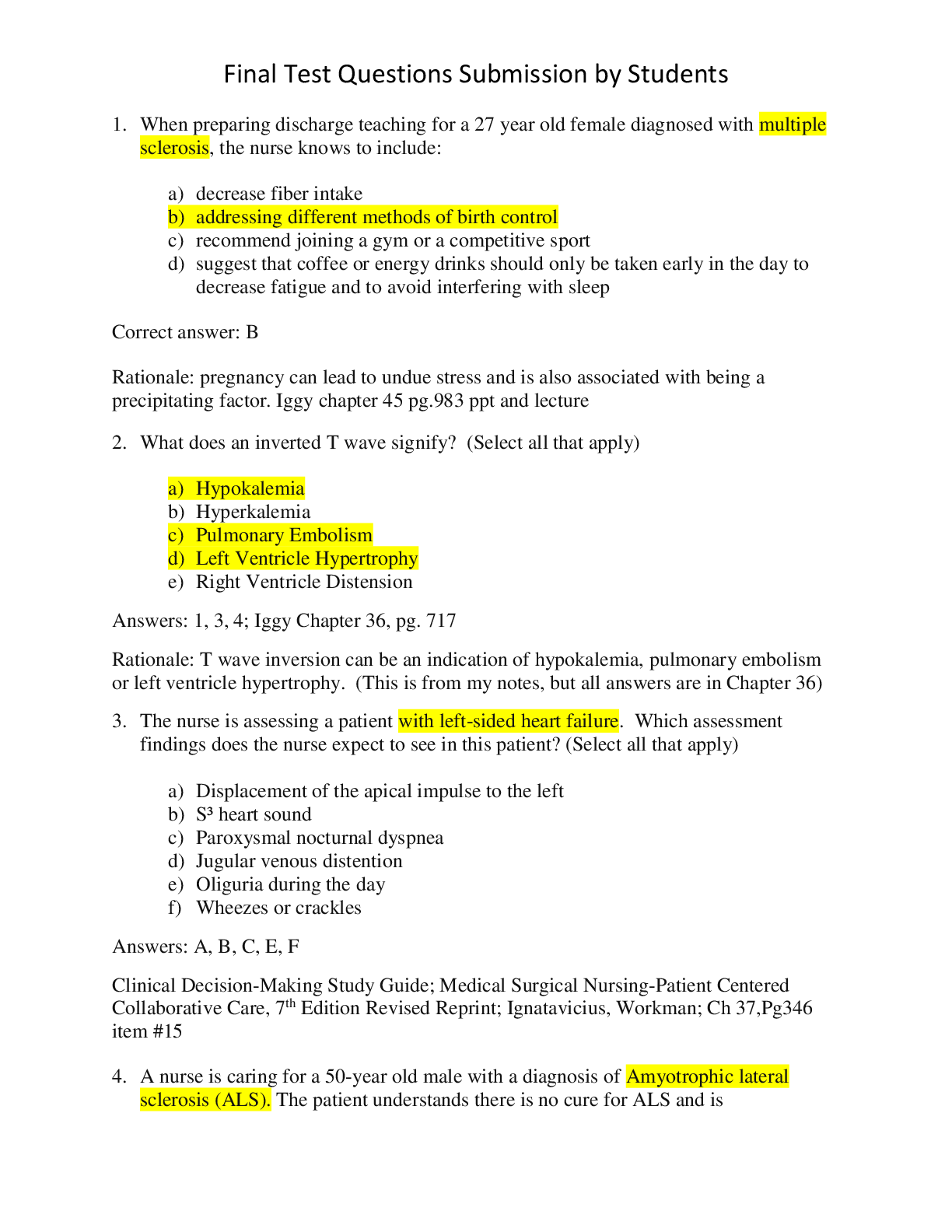OB ATI Remediation Exam 2022
Document Content and Description Below
Managing client care: delegation to assistive personnel (Ch. 1) - ANSWER Clerical duties, selected care tasks such as ambulation, feeding, mouth care, and bathing, data gathering such as intake and o ... utput and vital signs Medical conditions: priority intervention for a client who is having a seizure (Ch. 9) - ANSWER Turn woman onto her side and suction mouth to prevent aspiration. Infections: Treatment for Gonorrhea (Ch. 8) - ANSWER Ceftriaxone (Rocephin) IM and azithromycin (Zithromax) PO for gonorrhea One dose prescription Broad-spectrum antibiotic Bactericidal action Client education: instruct the client to take entire prescription as prescribed, to repeat the culture to assess for medication effectiveness, educate the client regarding safe sex practices Nursing care and discharge teaching: newborn hygiene (Ch. 26) - ANSWER After the initial bath, the newborn's face, diaper area, and skin folds are cleansed daily. Complete bathing is performed 2 to 3 times a week using a mild soap that does not contain hexachlorophene. Teach the parents proper newborn bathing techniques by a demonstration. Bathing should be at the convenience of the parents, but not immediately after feeding to prevent spitting up and vomiting. Organize equipment so that the newborn is never unattended. Make sure the hot water is set at 49 C or 120C or less. Avoid drafts in the room, dry newborn right after bathing. Nursing care of newborns: umbilical cord care (Ch. 24) - ANSWER Prevent cord infection by keeping the cord dry, and keep the top of the diaper folded underneath it. Educate parents for signs of infection and to contact the provider if they see a moist, red cord with foul odor and purulent discharge. Fetal assessment during labor: monitoring fetal heart rate (Ch. 13) - ANSWER Continuous external fetal monitoring is accomplished by securing an ultrasound transducer over the client's abdomen to determine PMI, which records the FHR pattern, and a tocotransducer on the fundus that records uterine contractions. Advantages: noninvasive, reduces risk for infection, membranes don't have to be ruptured, cervix does not need to be dilated Disadvantages: contraction intensity is not measurable, quality of recording is affected by obesity and fetal position Newborn nutrition: evaluating teaching of bottle feeding (Ch. 25) - ANSWER Teach the parents how to tell if their newborn is being adequately fed (gaining weight, bowel movements are yellow, soft and formed; infant will stool after every feeding, and after a coupld of weeks, movements decrease to 1 or 2 per day; voiding 6 to 8 times per day; and satisfaction between feedings) [Show More]
Last updated: 3 years ago
Preview 1 out of 4 pages
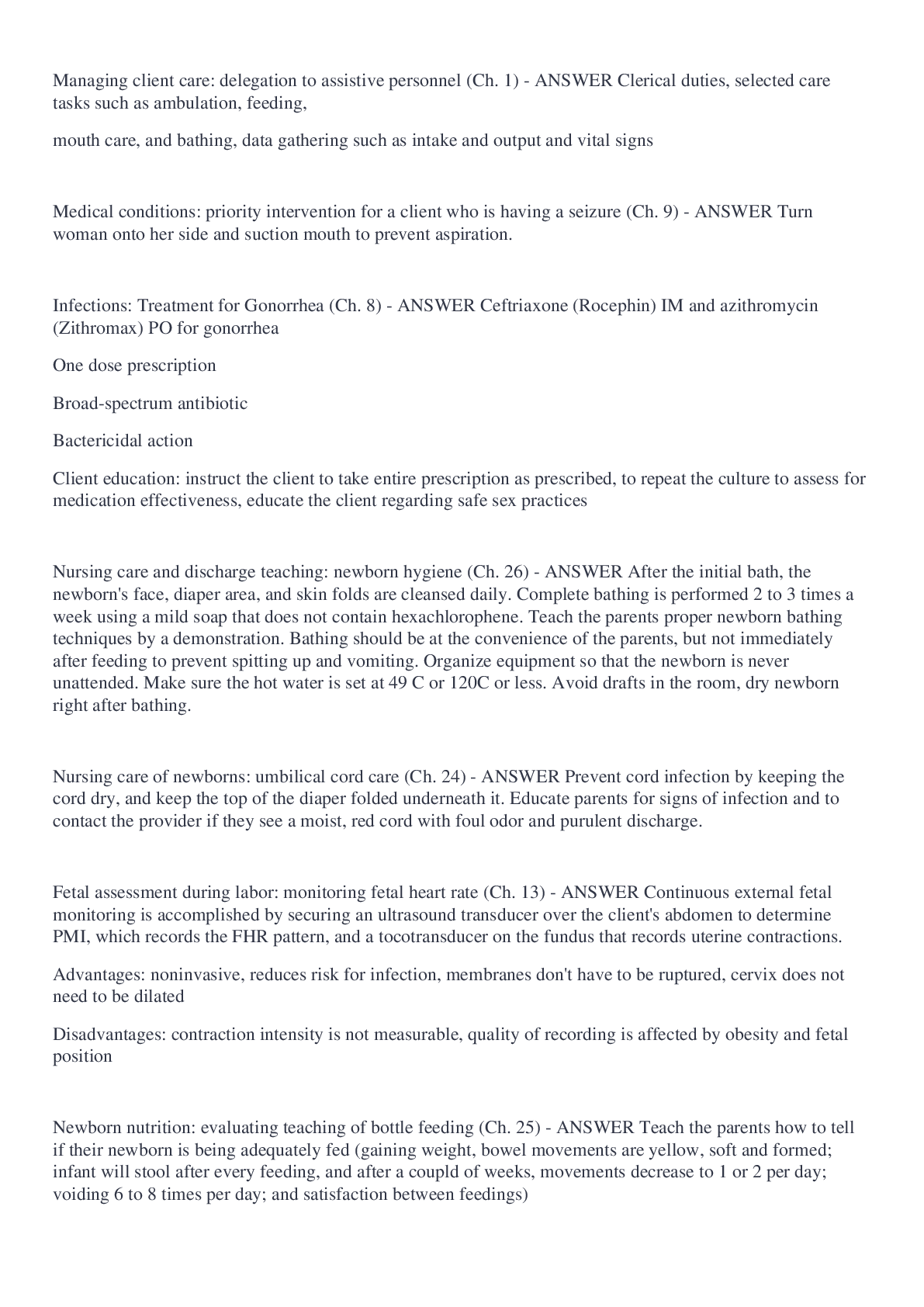
Buy this document to get the full access instantly
Instant Download Access after purchase
Buy NowInstant download
We Accept:

Reviews( 0 )
$10.00
Can't find what you want? Try our AI powered Search
Document information
Connected school, study & course
About the document
Uploaded On
Jul 24, 2022
Number of pages
4
Written in
All
Additional information
This document has been written for:
Uploaded
Jul 24, 2022
Downloads
0
Views
107


